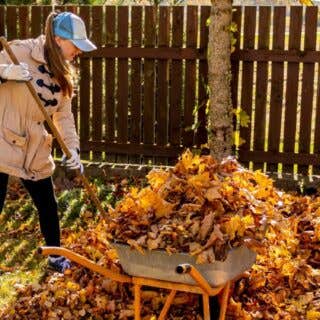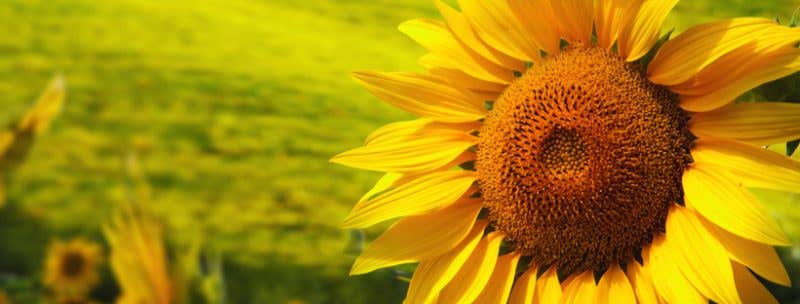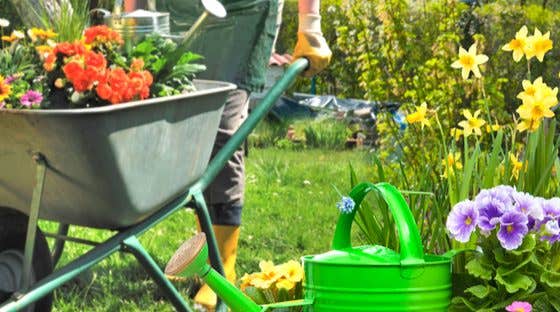Soaking up the gorgeous vistas of your summer garden is a great payoff for all of your hard work. An effective maintenance schedule will keep your landscape healthy and thriving so you can continue to enjoy the benefits of your efforts.
Nothing worth having comes easy, so putting in a little more work throughout the summer to maintain and improve the beautiful garden will yield incredible results.
Time to flex your green thumb and follow these tips to make the most out of your summer garden.
Start Weeding
It is recommended to remove weeds about once a week to keep the garden healthy. Weeds are notorious for stealing resources from the surrounding plants, so staying on top of them is imperative for the health of your garden. Weeding allows your garden to absorb the water and nutrients from the soil needed to flourish during the hot and sunny season.
Weeding can be extremely frustrating when it seems as though these pesky plants grow back as soon as they are pulled from the ground. The proper method to avoid rapid regrowth suggests you use the pinch and pull technique to remove the weeds at the root. This method prevents breakage and ensures the entire plant is removed from the soil. A gentle pull does a better job of properly removing the tricky plants. So, with a bit of patience and persistence, you can use these techniques to enjoy a weed-free garden this summer.
Plant weather-appropriate crops

Not every veggie can handle the summer heat, so picking plants that are weather appropriate will ensure long-lasting crops all season long. Avoid growing broccoli and cauliflower during the summer months. These cruciferous crops do not fare well in the summer heat.
There are still plenty of options that are meant for the summer, like cucumbers, beans and tomatoes. These delicious plants thrive during the hot season and will make great additions to the summer garden.
Mow and edge around the bed

Keeping the edge of the garden bed tidy has many benefits that improve the results of your summer garden. First, it will prevent harmful pests, like ticks, from hiding in the brush and injuring the plant life.
Second, it has aesthetic benefits by providing a clean border for your plant beds, which compliments the overall landscape. Edging will keep weeds and grass from growing into the garden bed and keep that lawn looking polished while maintaining the overall health of the plants. It can be a messy task though, so be sure to keep the plant debris off of your garden furniture and amenities with some patio and dining set covers.
Check for pests
Some of the biggest culprits of plant decay are the pests that feed on the fruits of your labor. Periodically checking the veggies for any pesky parasites is the first step in preventing any further damage to the garden. Keeping the garden bed free of dead twigs and leaves will keep any potential intruders away from your space.
Not all bugs are the enemy, however, so be careful if you are exploring the option of pesticides. Some insects like ladybugs and praying mantises pollinate plants and eliminate harmful pests from disrupting your garden.
Water in the morning

In the morning, the sun is not as intense, which helps the plants to properly absorb water. This time of day is more ideal than the afternoon when the heat will cause the plant’s moisture to evaporate.
Watering the plants is an essential part of caring for your garden, but the time of day you choose to water them has a significant effect on the overall benefits.
Prune regularly

To a gardening novice, pruning can seem like a harmful practice, but it actually generates fresh growth and improves the strength and health of the plant. By removing the dead or diseased growth, the plant can direct its energy toward producing healthy buds and fresh fruit.
It also increases airflow, and sunlight can reach every plant evenly instead of being obstructed by overcrowding. Pruning also reduces the risk of pests and disease taking over. Routinely set aside time to trim and prune if you want to keep your harvest healthy during the summer months.
Feed your plants

Plants need to eat–just like we do–but their needs are a little less complicated. It is very likely that because the plants are in a bed, they are less prone to needing fertilizer because of the nutrients they can find in the soil. If your garden contains a lot of fruit and vegetables, however, it can be beneficial to feed them regularly.
Feeding plants every two to three weeks should be sufficient enough to yield significant growth. Fertilizers can strengthen the plants’ integrity and better prepare them for potential environmental stressors.
Seasoned gardeners recommend using organic fertilizer options. Excess exposure to chemical fertilizer can lead to burning and other harmful side effects. If there is any confusion about your plants’ needs, consult a professional.
Research your plant hardiness zone
Hardiness zones are used to determine if the plants you want to include in your garden can withstand the climate in the area. It is beneficial to do the research beforehand and avoid harming foreign plants that will not fare well in your climate.
Make sure there’s a bit of shade
For most plants, photosynthesis occurs in the morning before temperatures are too high. Adding afternoon shade allows veggies to stay cool during the day. Just as you would use solar shades and tarps to protect the other items in the yard, the same goes for your garden.
Although plants love sunlight, too much exposure can be harmful to their growth. Too much sunlight can cause increased evaporation of moisture from the plants, which dries them out and leaves them vulnerable to other environmental issues.
Watch out for diseased leaves

It is easy to spot diseased leaves because they will commonly have brown or black spotting. The culprits are parasitic organisms that hide in fallen foliage or dead twigs. Plants encounter disease most often in the spring season due to higher moisture, but it is important to watch out for the signs of plant disease year round. The best way to treat the issue is by pruning or removing the infected area and keeping the rest of the plant healthy.

















Recent Comments